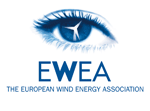Brussels in brief, WW200902
A new EU energy deal
17.02.2009
At the end of 2008, European leaders responded unequivocally to the global energy and climate crisis by agreeing to the Renewable Energy Directive. The decision, hailed by the renewables industry as a historic moment, will enable renewable energy technology to be developed, deployed and exported to a carbon- and fuel-constrained world.
It will also help the EU face the current economic turmoil, as wind energy provides jobs while reducing electricity costs, energy dependence, energy imports and fuel price risks.
In practice, the directive establishes a 20% target for energy from renewables by 2020, which is divided into mandatory targets for each EU Member State. If the Directive is implemented swiftly and effectively, it should ease the road to the ambitious target, as it will give renewables projects priority connection to the grid and trim administrative red tape. Member States will also be able to work together to meet their targets under stable market conditions.
For the first time, each has a legally binding renewables target for 2020 along with a clear trajectory to follow. By June 2010 the Member States will draw up Renewable Action Plans detailing the ways in which they are to meet their 2020 targets, which will then be submitted to the Commission for assessment. They will report on how they are doing every two years, which should encourage consistent progress.
The 20% target means that more than one-third of the EU’s electricity will come from renewable energy in 2020 – up from 16% in 2006. By 2020, wind energy is expected to have overtaken hydropower as the EU’s largest source of renewable electricity (see table).
Renewables' contribution to EU electricity consumption up to 2020 | ||||
Type of energy | 2005 Eurostat TWh | 2006 Eurostat TWh | 2010 Projections TWh | 2020 Targets TWh |
Wind | 70.5 | 82 | 176 | 477 (34.8%) |
Hydro | 346.9 | 357.2 | 360 | 384 (28%) |
Photovoltaic | 1.5 | 2.5 | 20 | 180 (13.1%) |
Biomass | 80 | 89.9 | 135 | 250 (18.3%) |
Geothermal | 5.4 | 5.6 | 10 | 31 (2.3%) |
Solar thermal elect | - | - | 2 | 43 (3.1%) |
Ocean | - | - | 1 | 5 (0.4%) |
Total RES | 504.3 | 537.2 | 704 | 1370 |
Total Gross Electricity Generation EU-27 | 3320.4 | 3361.5 |
|
|
(Trends to 2030-baseline) |
|
| 3568 | 4078 |
(Combined RES and EE) |
|
|
| 3391 |
Share of RES | 15.20% | 16.00% | 19.70% | 33.6-40.4% |
European Renewable Energy Council: European Renewable Technology Roadmap 200 | ||||
However the adoption of the directive, as important a landmark as it is, is only the beginning. Implementation is the real key to success and the coming two or three years will determine whether the 2020 objectives are met.
The possibility of a future based on dependable, affordable and clean energy is now a real one. But Member States have to act quickly to implement the directive in order to avoid the enormous environmental and economic costs of delay.
The adoption of the Renewables Directive is a significant first step towards solving these immense problems. The Member States need to keep the momentum going if the enormous potential the directive offers is not to be lost.
The first big gathering of the wind energy sector since agreement on the directive was reached will be the European Wind Energy Conference (EWEC) 2009 in Marseille, from 16-19 March.
For more information on the directive, click here
For more information on EWEC 2009, click here
 Older
Older



Follow EWEA on: